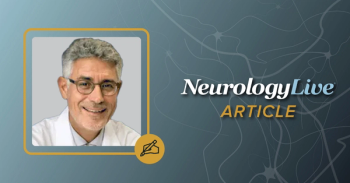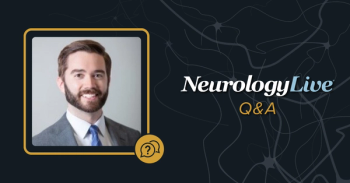
No Speech Changes Displayed After Early Neurostimulation in Parkinson Disease
Analysis on the EARLYSTIM trial assessing deep brain stimulation of the subthalamic nucleus in early Parkinson disease showed maintained speech intelligibility and nonspeech oral movements.
A recent, prospective ancillary analysis on the
The Unified Parkinson's Disease Rating Scale (UPDRS)2 motor score improved significantly more in the STN-DBS group than in the BMT group in OFF f (P <.0001) and ON medication (P <.0001) conditions. The between-group comparison of the changes in the UPDRS speech item 18 was found to be significantly worse (P = .012) for ON medication and ON stimulation conditions in the STN-DBS group.
“We showed that STN-DBS maintained these outcomes at the same level as BMT, as well as patient-reported outcomes,” lead author Serge Pinto, PhD, CNRS research director, Aix-Marseille Université, Aix-en-Provence, France, and colleagues wrote.1 “Our overall clinical conclusion is that at this early disease stage—in contrast to later disease stages—neither changes in objectively measured nonspeech movement parameters and speech intelligibility nor limitations of self-assessed communication caused by STN-DBS can be found.”
Primary outcomes analyzed were changes in blinded speech intelligibility assessment between STN-DBS and BMT over 2 years, while secondary outcomes included nonspeech oral movements, physician- and patient-reported assessments. A majority of EARLYSTIM patients participated in the EARLYSTIM-SPEECH study. STN-DBS (n = 102) and BMT (n = 99) groups underwent assessments ON/OFF medication at baseline and 24 months (in four conditions: ON/OFF medication, ON/OFF stimulation—for STN-DBS). Words and sentences were randomly presented to blinded listeners, and speech intelligibility rate was measured. Statistical analyses compared changes between the STN-DBS and BMT groups from baseline to 24 months.
Over the 2-year period, between July 2006 and March 2012, changes in speech intelligibility and maximum phonation time (MPT, oral diadochokinesis), as well as patient-reported outcomes, were not different between groups, either OFF or ON medication or OFF or ON stimulation. Most outcomes displayed a nonsignificant trend toward worsening in both groups. Change in oral diadochokinesis was significantly different between STN-DBS and BMT groups ON medication only, when DBS was turned OFF.
The MPT and diadocholinesis, except where mean difference between groups was significant (P = 0.04) and the STN-DBS group performed worse, did not change significantly between baseline and 24 months. Change in medication for levodopa equivalents was significant in both groups (P <.0001) between baseline and 2 years, reduced in the STN group (more than 300 mg), and increased in the BMT group (more than 200 mg).
The worst functional condition of the “patient-reported” speech item 5 of UPDRS II differed between groups ON medication (P = 0.001), as patients who underwent STN-DBS displayed a lower score on average. No significant difference between groups was observed in regard to the best functional condition (P = .830). Between-group comparison of changes from baseline to 24 months differed significantly (P <.0001) for the Parkinson's Disease Questionnaire (PDQ-39)3 summary index, as the STN-DBS group was favored. Changes in PDQ-39 single speech and communication items were not significantly different between the groups (item 34: P = .089; PDQ-39 item 35: P = .816).
Limitations consisted of methodological issues that impeded strict calibration of sound pressure levels in majority of recordings. Researchers did not consider a loudness measure in the analysis, no assessment of hypophonia and monoloudness, and also could not calculate monopitch according to study design. Hence, the investigators concluded that longer term results from the EARLYSTIM-SPEECH study may provide evidence with the difference of progressive deterioration of speech in STN-DBS at earlier stage PD compared with patients who have advanced PD.
“In the future, correlation analysis in the STN-DBS group between the location of the active stimulated contact and outcomes of speech intelligibility and nonspeech oral movements would be interesting,” Pinto et al noted.1 “The strength of our study is the large patient population (more than 200 PD patients) compared in a prospective study and randomized to a powerful intervention or BMT with a rigid design over a 2-year period, which is unprecedented in the literature so far.”
REFERENCES
1. Pinto S, Nebel A, Rau J, et al. Results of a Randomized Clinical Trial of Speech after Early Neurostimulation in Parkinson's Disease. Mov Disord. 2022;10.1002/mds.29282. doi:10.1002/mds.29282
2. Lang AE. Teaching tape for the motor section of the Unified Parkinson's Disease Rating Scale. Mov Disord. 1996;11(3):344-345.
3. Peto V, Jenkinson C, Fitzpatrick R, Greenhall R. The development and validation of a short measure of functioning and well being for individuals with Parkinson's disease. Qual Life Res. 1995;4(3):241-248. doi:10.1007/BF02260863
Newsletter
Keep your finger on the pulse of neurology—subscribe to NeurologyLive for expert interviews, new data, and breakthrough treatment updates.



























